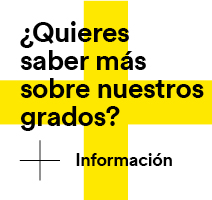Nietzsche once said that "those who were seen dancing were considered mad by those who could not hear the music". Paula Brand Ludovic, dancer and 1st year student of the double Degree in Philosophy and Journalism, presents a reflection on ballet and its conception throughout history.
Little is said about how well Nietzsche appreciated the eminence of dancing. These words may lead us to the idea that dancing is not for everyone, at least in the sense of an objective and universal internship ; hence his approach goes hand in hand with his own Philosophy of understanding the world through perspectives and interpretations. Those who are able to dance are "crazy", those who understand the true nature of an art that cannot and should not be limited to a mere movement to the beat of musical notes. On the contrary, to reduce it in such a way would dismiss a gallery of art that emerges from it. Even the dancing Nietzsche forgot to clarify that it takes much more than music to understand this madness.
It is precisely how and from where we look at dance that opens the way to join those crazy dancers. To become part of that museum is to be able to play with one's feet, to tell stories with one's own body, to move with or without a ballet tutu.
The staging of a ballet could be considered the great banquet of the arts. A dramatic plot as a starter, bodies in glittering costumes as the main course and an orchestra for dessert. It is a given for the viewer who, upon first seeing Swan Lake, is engrossed by the ballerina's strong feet supporting 32 fouettes, by the synchronicity and white skin of the swans, or by Tchaikovsky's masterful music. Still, the connection one can get with a ballet surpasses the limits of any tangible art. Sometimes, even without listening to the music, dance offers us more than aesthetic pleasure: it makes us uncomfortable, it hurts us, it makes us feel.
More than any other art form, ballet defies language. A three-minute scene can say more than a five-hundred-page novel. The grip one has with gesture, posture, movement and pantomime turns a performance into an unwritten and unique piece of literature. It is perfectly exemplified by the devastating scene of Giselle's madness upon learning of Albretch's amorous deception. Although it is a sequence organized and governed by the music, each dancer offers something undeniably her own. Both Natalia Ossipova's and Marianela Núñez's performances are dazzling, but their mannerisms, expressions and details create a unique experience with their bodies and make us feel Giselle's insanity in different ways. A nice parallel to the madness Nietzsche referred to.
Hence the main source of an art like ballet: the human body. Since its inception, the use of pointe shoes has been a pivot of questions for dancers. "How do you do it?", "Doesn't it hurt?", "Are your feet as bad as they show it in the movies?". Because, indeed, it is a fact that surpasses reason by turning that effort into beauty. But that appropriation of the body and the feet that ballet makes is accompanied by something that can be just as surprising, and that is the capacity that in the same body we find form and content: the variety of technical skills and the symbolic expression of feelings. This is how we understand not only the art of the body in movement dressed in shiny tutus and full of grace, but also the soul of the character embodied in that body.
That is why Hegel joined Nietzsche in his study of dance when he stated that ballet must be a correspondence between spirit and appearance. The pantomime and the transmission of feelings is what can "vivify the cold and peaceful sculptural work in dance". That is the challenge of language: to communicate in a universal way, through gestures, a whole narrative that moves.
The stories that are told throughout the two or three acts that make up a ballet give way to hundreds of questions and sensations. In them we can find the most tragic endings and also the most joyful. In the ballets, paradoxes of life, destiny, dreams, love and sadness are poetically narrated. The special thing is that, as an audience, we are able to be touched by these stories and even appropriate them. Whether it is to see a classic like Romeo and Juliet or to follow the Christmas tradition with The Nutcracker, they always evoke that intrigue and restlessness; we enjoy a union of the arts and love the madness of the dancers.
But music and ballet could never be separated. We hear Tchaikovsky's music perfectly when we imagine the white swan. For the dancers, their steps must respond to the precision of the musical phrases, because from there derives the whole of their movements, as well as the character of what they want to convey to the public. As spectators, the melodies we hear go hand in hand with what we see; they help us to understand the drama, the Fail, the calm and the evolution of the story. They contain such an important charge that can make us want to join the ballet.
Perhaps what Nietzsche wanted to tell us with his phrase is that to remain spectators is not to understand the dance. The entrance to the art gallery that represents a ballet work is not mere exhibition, but an invitation to be part of it. It is to perceive these artistic manifestations of dance, poetry in movement, music, body, literature, costumes and gestures to find what is ours. A ballet touches us if we understand that more than something to see and hear, it is something to feel and dance. It infects us with fervor. We leave dancing, always wanting to do it. We leave being crazy too.
If you liked the article, you might be interested in one of our Degrees!









